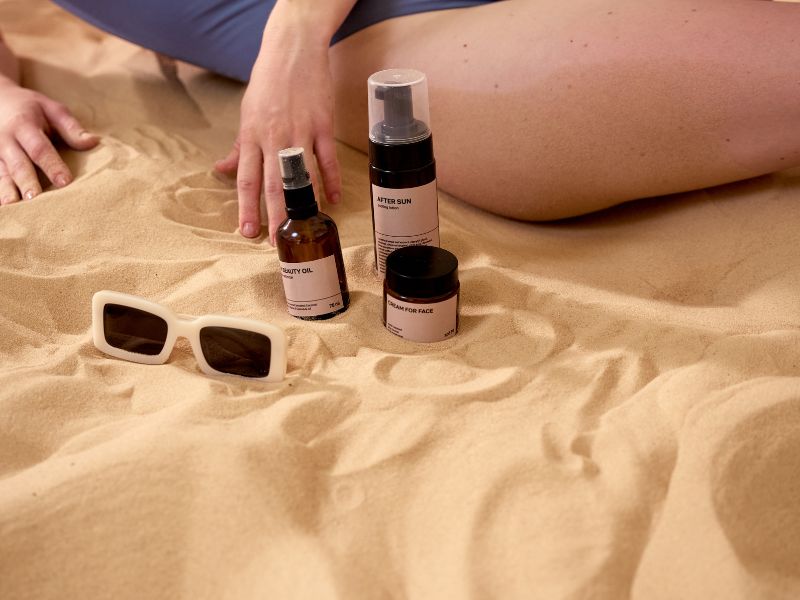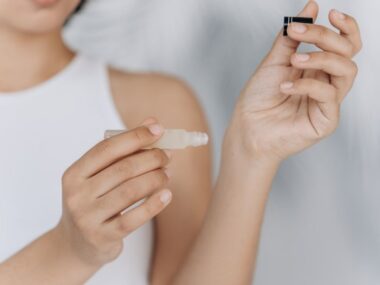Tanning beds, also known as sunbeds, have long been popular for those seeking a bronzed glow without relying on outdoor sun exposure. However, questions about safety measures within tanning beds, especially regarding sunscreen use, continue to arise. Sunscreen is widely recommended for protecting skin against harmful UV rays outdoors, but its role in tanning beds isn’t always clear. This article will explore the purpose of sunscreen, how it interacts with artificial UV radiation, the pros and cons of using it in a tanning bed, and expert opinions on safe tanning practices.
Understanding Sunscreen and Its Mechanisms
Sunscreen is a formulation designed to protect the skin from harmful ultraviolet (UV) radiation. It typically contains active ingredients, like zinc oxide, titanium dioxide, avobenzone, or octinoxate, that either absorb or reflect UV radiation. Broad-spectrum sunscreens are particularly effective, as they protect against both UVA rays (which penetrate deep into the skin, causing ageing) and UVB rays (which cause sunburn and skin cancer). By filtering out these rays, sunscreen helps minimize the risk of sunburn, premature ageing, and skin cancer when applied in outdoor conditions.
How Tanning Beds Work and the Risks Involved
Tanning beds emit UV radiation to simulate sun exposure, primarily UVA rays, although they can also emit some UVB rays depending on the design and intensity. This controlled UV exposure induces the skin to produce more melanin, the pigment responsible for a tan. However, the concentrated UV exposure from a tanning bed poses significant risks, such as:
- Accelerated skin ageing: UVA rays are a major cause of photoaging, which leads to wrinkles, fine lines, and loss of skin elasticity.
- Increased risk of skin cancer: Studies show that using a tanning bed before the age of 35 can increase melanoma risk by up to 75%. Both UVA and UVB exposure contribute to skin cancer development.
- Damage to eyes and immune suppression: UV radiation from tanning beds can damage the eyes and suppress immune functions in the skin.
Given these risks, the primary consideration is whether using sunscreen in a tanning bed provides effective protection or if it interferes with the tanning process.
Why Sunscreen and Tanning Beds May Not Be Compatible
Many people believe wearing sunscreen in a tanning bed may be a good idea to mitigate UV damage. However, several factors make it a questionable practice:
- Sunscreen and Tanning Beds Counteract Each Other’s Purposes Sunscreen’s primary function is to prevent UV rays from penetrating the skin. Since tanning beds rely on UV exposure to stimulate melanin production, wearing sunscreen in a tanning bed could reduce or prevent the intended tanning effect. In other words, sunscreen acts as a barrier to the tanning process, making it less efficient or even ineffective. This conflict essentially defeats the purpose of using a tanning bed, as users are paying for UV exposure that they are simultaneously blocking.
- Inadequate Sun Protection Although sunscreen can reduce UV exposure, it does not eliminate it, especially under the concentrated conditions of a tanning bed. Even the highest SPF (Sun Protection Factor) sunscreens are unlikely to provide full protection within a tanning bed. The intensity and proximity of UV rays in a tanning bed may overwhelm sunscreen’s protective capabilities, leaving skin susceptible to potential harm, particularly with prolonged use.
- Risk of Uneven Tanning and Product Interference Applying sunscreen selectively or unevenly could lead to an uneven tan. The high exposure to UV rays in tanning beds can also cause some sunscreen products to break down more quickly than in outdoor environments, reducing their effectiveness. Additionally, certain ingredients in sunscreens are not intended to withstand the artificial heat and UV exposure of tanning beds, leading to unpredictable chemical interactions on the skin.
Potential Consequences of Using Sunscreen in a Tanning Bed
There are a few concerns associated with applying sunscreen in a tanning bed. These concerns include product efficacy, skin health, and potential unintended reactions:
- Reduced Tanning Efficiency: As mentioned, sunscreen blocks UV radiation, which disrupts the tanning process. This leads to longer tanning sessions or more frequent visits to tanning beds, both of which increase the risk of skin damage and potential long-term health complications.
- Increased Skin Sensitivity and Allergic Reactions: Some sunscreen formulations contain chemicals that may not react well under the intense, focused heat and light of a tanning bed. This can lead to skin irritation, redness, or even allergic reactions. Common sunscreen ingredients such as oxybenzone, for example, can sometimes cause sensitivity when exposed to prolonged UV radiation in enclosed environments.
- Ineffective UV Protection in Tanning Beds: While sunscreens are designed to protect against natural sunlight, tanning beds emit a high concentration of UVA rays, often at levels much higher than those found outdoors. This concentrated exposure can compromise the protective barrier of sunscreen, rendering it less effective than expected.
Alternative Protection Measures in Tanning Beds
For those who choose to use tanning beds, there are safer alternatives to sunscreen that may help protect skin from excessive UV damage:
- Use of Indoor Tanning Lotions: Indoor tanning lotions are specifically formulated to support melanin production while also providing hydration and certain skin-nourishing ingredients. They generally don’t contain SPF, allowing the skin to tan but often include antioxidants, vitamins, and moisturizing agents to counteract some of the drying effects of UV radiation.
- Shorter Sessions and Reduced Frequency: Limiting the duration and frequency of tanning bed sessions is one of the best ways to reduce the potential damage from UV exposure. This practice reduces the cumulative impact of UV rays on the skin, which is associated with increased skin cancer risk and accelerated ageing.
- Pre-Tan and Aftercare Products: Some indoor tanning lotions also come with “aftercare” formulations that hydrate the skin and help prolong the tan. These products usually contain ingredients like aloe vera, vitamin E, and other antioxidants, which aid in skin repair and hydration.
- Wearing Eye Protection: The use of protective goggles is mandatory in most tanning salons, as UV radiation can severely damage the eyes, potentially leading to cataracts and other vision problems. Goggles are designed to block both UVA and UVB rays and offer a layer of safety that sunscreen cannot provide for eye protection.
Dermatologist and Expert Opinions on Tanning Beds and Sunscreen
Dermatologists are generally unanimous in their warnings against tanning bed usage due to the health risks associated with UV exposure. Organizations such as the American Academy of Dermatology (AAD) and the Skin Cancer Foundation strongly discourage the use of tanning beds, citing the increased risks of melanoma and other skin cancers. Dermatologists also assert that there is no safe way to tan indoors or outdoors, as any exposure to UV radiation can potentially harm the skin.
According to dermatologists, sunscreen in a tanning bed is an inadequate protective measure against intense UVA exposure, which is highly concentrated in tanning beds. They emphasize that sunscreen is formulated for natural sunlight and is not designed to withstand the artificial, concentrated radiation of tanning beds. Therefore, using sunscreen in a tanning bed may give a false sense of security, leading individuals to overexpose their skin.
Safer Alternatives to Achieve a Tan
For those seeking a tanned appearance without UV exposure, several safer alternatives exist:
- Self-Tanning Lotions and Sprays: These products contain dihydroxyacetone (DHA), a colourless sugar that interacts with the dead cells on the skin’s surface to produce a temporary tan. Since these products don’t rely on UV exposure, they are a safer choice.
- Spray Tans: Available at many salons, spray tans provide a quick and even application of tanning solution, typically lasting about a week. This option allows for a consistent tan without any UV radiation exposure.
- Bronzing Makeup Products: Bronzers, tinted moisturizers, and other makeup products can provide a tanned appearance without requiring any UV exposure. These products are washable and offer a temporary, customizable glow.
Conclusion
The question, “Can I wear sunscreen in a tanning bed?” arises from a common misconception about the role of sunscreen in UV protection. Although sunscreen is crucial for outdoor sun exposure, it is not well-suited to the unique conditions of a tanning bed. Sunscreen interferes with the tanning process and is inadequate in providing full protection from the intense, focused UVA radiation of a tanning bed. Experts agree that the risks of using tanning beds far outweigh any potential benefits, and they advise against their use altogether due to the heightened risk of skin cancer and premature ageing.
Instead, individuals are encouraged to consider alternative methods for achieving a tanned look, such as self-tanners, spray tans, or bronzing products. For those who do choose to use tanning beds, minimizing session times, using protective eyewear, and applying post-care lotions designed for tanning beds may help mitigate some risks. Ultimately, protecting skin health and understanding the limitations of sunscreen within a tanning bed setting is key to making informed decisions about tanning practices.






